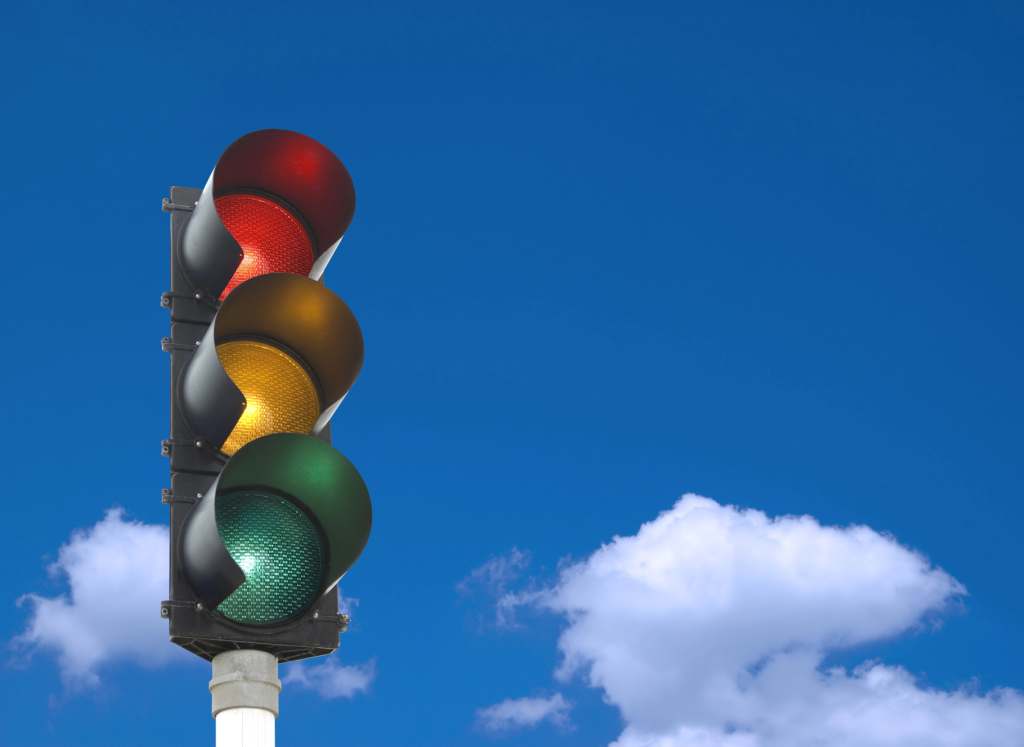The split-second choice drivers face at yellow lights creates more confusion and panic than any other traffic situation they encounter daily. Should you speed up to beat the red or slam the brakes and risk getting rear-ended by the car behind you? This impossible decision happens so fast that instinct takes over, and instinct often chooses wrong in these critical moments.
Hesitation or misjudgment causes more collisions than red-light running, despite all the attention enforcement gives to red-light violations. Yellow-light crashes happen when one driver stops unexpectedly while another accelerates to make it through, creating T-bone collisions in intersections. The confusion about what to do when the light turns yellow creates the dangerous conditions that lead to serious accidents.
Data-driven insights into timing, psychology, and prevention reveal patterns that cities can address through better design and drivers can avoid through awareness. Understanding why these crashes happen helps both infrastructure planners and individual drivers make better decisions. Here’s the reality of yellow light accidents in Chicago and what causes them.
The Psychology of Hesitation
Perception of time and distance misleads drivers about whether they can safely clear intersections before red lights activate. The brain struggles to calculate speed, distance to the intersection, and yellow-light duration simultaneously while driving at highway speeds. This cognitive overload leads to mistakes that feel correct in the moment but prove disastrous seconds later.
Variability in signal length across intersections means drivers can’t develop reliable instincts about yellow-light duration. Some intersections have three-second yellows while others give five seconds, with no visual way to know which is which. What works at one intersection gets you into trouble at another when you assume similar timing.
Emotional pressure behind beat-the-light behavior intensifies when you’re running late or when other drivers behind you expect you to go. The car behind you might honk if you stop for a yellow, creating social pressure to run it. Fear of causing a rear-end collision by stopping makes drivers accelerate through yellows they should have stopped for safely.
How Infrastructure Fuels Confusion
Differences in signal timing and intersection design create inconsistent experiences that prevent drivers from developing good judgment. Wide intersections need longer yellow phases than narrow ones, but many cities use standardized timing regardless. Engineers set yellow duration by speed limits, but actual traffic speeds often exceed posted limits significantly.
Inconsistent countdowns and turn-arrow delays add complexity that distracts drivers from making good decisions about yellow lights. Some intersections show countdown timers while others don’t, making it harder to predict when yellows will appear. Left-turn arrows that appear at different points in the signal cycle catch drivers off guard regularly.
Chicago’s mix of old and new systems raises crash rates because drivers can’t develop consistent habits that work everywhere. Modern traffic-responsive systems operate differently than old fixed-timing signals, creating unpredictability. Intersections upgraded with new technology confuse drivers accustomed to old timing patterns they’ve learned over years of driving the same routes.
Enforcement and Legal Implications
Yellow-light timing factors into liability determinations when crashes occur during that amber phase between green and red. Courts examine whether yellow duration met engineering standards for the approach speed. Inadequate yellow timing can shift liability from drivers to municipalities that failed to provide safe signal timing.
Red-light cameras complicate matters by catching drivers in intersections split-seconds after lights turn red following yellow phases. Many tickets issued by cameras capture drivers who entered on yellow but didn’t clear before red. The zero-tolerance approach of automated enforcement doesn’t account for the psychological difficulty of yellow-light decisions or inadequate timing.
Common defenses drivers raise in citation disputes include inadequate yellow-light duration, obstructed signal visibility, and necessity to avoid rear-end collisions. Engineers must testify about whether yellow timing met standards. Defendants argue they made reasonable split-second decisions given the circumstances and signal timing they faced.
Preventing Intersection Collisions
Maintain spacing and anticipate amber changes by watching for stale green lights that have been green for a while. When you see a green light from far away, assume it might change before you reach the intersection. This anticipation prevents the surprise that causes poor yellow-light decisions when signals change unexpectedly.
Real-time traffic-signal data through navigation apps helps drivers prepare for upcoming signal changes more effectively than watching lights alone. Some systems broadcast signal-phase information to vehicles, warning drivers about impending yellow lights. This technology eliminates surprise and gives drivers time to decide calmly rather than reacting in panic.
City initiatives to improve synchronization reduce the number of yellow-light decisions drivers must make during typical commutes. Better signal coordination means more green lights and fewer stops, reducing exposure to yellow-light dilemmas. Extended yellow phases at high-speed approaches give drivers adequate time to stop safely or clear intersections completely.
Conclusion
Behavioral and infrastructure roots of crashes intertwine in yellow-light accidents that blame rarely falls on just one factor. Driver psychology makes perfect judgment impossible in split-second situations. Poor infrastructure design and inconsistent timing compound the problem by creating unpredictable conditions that defeat good driving habits.
Caution and patience at intersections prevent yellow-light crashes better than aggressive driving or rigid adherence to rules without judgment. When you see yellow, your default should be stopping unless you’re so close that stopping would be dangerous. This conservative approach reduces intersection crashes even if it means occasionally waiting through an extra signal cycle.
Awareness of yellow light accidents in Chicago as a serious safety issue rather than minor inconvenience helps drivers take these situations more seriously. Yellow doesn’t mean “speed up” or “floor it”—it means “stop if you can do so safely.” Treating yellow lights with the caution they deserve prevents the crashes that injure and kill people every day at intersections throughout Chicago.

